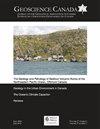Classic Rock Tours – An Introduction
IF 0.8
4区 地球科学
Q3 GEOSCIENCES, MULTIDISCIPLINARY
引用次数: 0
Abstract
Like most who opted for geoscience as a vocation rather than a mere job, I am often asked exactly why I chose this particular career path, and continue to be involved in my retirement. There are also times when I ask myself the very same question, but it usually boils down to this – being a geologist provides opportunities to visit inspiring, unique and often remote locations through field work and other field trips. In Scotland a couple of years ago, on a conference trip that led to the following article, I read Stephen Baxter’s excellent book Revolutions in the Earth. I thoroughly recommend it – as a biography of James Hutton it gives some insight into his personality – and it illustrates the love-hate relationship that geologists have with field work. In a letter written to a friend, Hutton complained “Lord pity the arse that’s clagged to a head that will hunt stones”. I could amplify this with a detailed footnote explaining the meaning of the archaic dialect verb to clag, but I don’t need to because all geologists will understand Hutton’s sentiment. We don’t really have a choice in this – our interest in exploring the natural world is just part of who we are. Such a conclusion may not be fully scientific, but there’s no denying its truth. Even in a technological age where some geoscience careers are built around black boxes and vast computer models, geology remains at its core an observational science, and the theories that we build are ultimately subject to the ground truth of field observations. It was the lure of field work, the outdoors and travel that brought me into geology, and I know that the same is true for many of my colleagues. Modern geoscience may be sophisticated, multidisclipinary and quantitative, but it always links back to careful field observations and their thoughtful interpretation. Even if technology gives us details and constraints, the essential plotline of the story of Earth comes from reading the rocks. Geoscientists are generally keen and adaptable travellers, who like to get off the beaten tourist paths, sometimes at their own peril. One of the great things about being a student of the Earth is that it surrounds us, and there will always be something interesting to find out, wherever we roam. We enjoy a special relationship with the Earth because we understand its dynamic nature and can visualize it in four dimensions. Travelling geologists are always glancing surreptitiously at roadside outcrops as they flash by, or asking exactly why that range of hills is where it is and shaped just so. This can at times be a source of great frustration to our families or our travelling companions, but it is a natural expression of our curiosity about all things that connect to earthly processes. The one thing that I fear most in aging is to lose such curiosity, as happened to my father. Our idea for a new series in Geoscience Canada that can provide helpful travel information and thoughtful geological context for influential or exceptional field areas is an attempt to both exploit and celebrate our innate curiosity. We envisage a series of articles that will provide readers not only with historical and scientific context for areas of remarkable geology, but also the essential practical information for self-directed excursions. In many cases, there is more than enough technical geoscientific data available for these places, but it is scattered within specialist publications, most of which require other knowledge to fully comprehend. To bring such sources together and communicate them more widely is by itself a service to our science. Areas of great scientific interest are commonly also featured in field trip guides, often from conferences, but these documents can be difficult to locate and access. Even if such sources can be tracked down, they will often emphasize the specialized technical aspects of sites over their wider context, and may lack the practical considerations of where they are and exactly how one might get there. Our vision for articles in Classic Rock Tours is to bring this information together in one place, such that geological context, site descriptions and practical advice are integrated with good maps, clear graphics, and interesting photographs. We do not see this series primarily as a venue for original research, but rather for synthesis and presentation of material from varied sources. It is true that a determined and time-consuming search of literature can eventually provide much of the information that a keen travelling geologist needs, but we seek here to place it all conveniently in one easily accessible source. We envisage papers in this series to sit at an intermediate technical level, so that they will inform and interest a wide cross-section of the Geoscience Canada readership. We also envisage a diverse target audience, not restricted to professional geoscientists engaged in conference or vacation travel. Many areas around the world provide type examples and/or influential sites that have influenced wider geological thought, so these articles can have considerable educational value, even if Volume 45 2018 25经典摇滚之旅-介绍
和大多数选择地球科学作为一种职业而不仅仅是一份工作的人一样,我经常被问到为什么我选择了这条特殊的职业道路,并在退休后继续参与其中。有时我也会问自己同样的问题,但通常可以归结为这一点——作为一名地质学家,我有机会通过实地工作和其他实地考察访问鼓舞人心、独特且往往偏远的地方。几年前,在苏格兰的一次会议之旅中,我读了斯蒂芬·巴克斯特的优秀著作《地球革命》。我非常推荐这本书——作为詹姆斯·赫顿的传记,它让人对他的个性有了一些了解——它说明了地质学家与野外工作之间的爱恨交织的关系。在给朋友的一封信中,赫顿抱怨道:“上帝怜悯那些会猎取石头的人。”。我可以用一个详细的脚注来解释clag这个古老方言动词的含义,但我不需要这样做,因为所有地质学家都会理解Hutton的观点。在这方面我们真的没有选择——我们对探索自然世界的兴趣只是我们自身的一部分。这样的结论可能并不完全科学,但不可否认其真实性。即使在一个技术时代,一些地球科学职业生涯都是围绕着黑匣子和庞大的计算机模型建立的,地质学仍然是一门观测科学的核心,我们建立的理论最终受制于实地观测的基本事实。正是野外工作、户外活动和旅行的诱惑让我进入了地质学,我知道我的许多同事也是如此。现代地球科学可能是复杂的、多学科的和定量的,但它总是与仔细的实地观测及其深思熟虑的解释联系在一起。即使技术给了我们细节和限制,地球故事的基本情节也来自于阅读岩石。地球科学家通常都是敏锐且适应性强的旅行者,他们喜欢离开人迹罕至的旅游路线,有时会自担风险。作为一名研究地球的学生,最棒的事情之一是它围绕着我们,无论我们在哪里漫游,总会有一些有趣的东西可以找到。我们与地球有着特殊的关系,因为我们了解地球的动态性质,并能在四个维度上看到它。旅行的地质学家总是在路边的露头掠过时偷偷地看一眼,或者问为什么这片山丘在这里,形状如此。这有时会让我们的家人或旅伴感到非常沮丧,但这是我们对所有与地球过程有关的事物的好奇的自然表达。随着年龄的增长,我最害怕的一件事就是失去这种好奇心,就像我父亲身上发生的那样。我们的想法是在加拿大地球科学杂志上推出一个新系列,为有影响力或特殊的野外地区提供有用的旅行信息和周到的地质背景,这是为了利用和庆祝我们天生的好奇心。我们设想一系列文章,不仅为读者提供卓越地质领域的历史和科学背景,还为读者提供自主游览的重要实用信息。在许多情况下,这些地方有足够的技术地球科学数据,但这些数据分散在专业出版物中,其中大多数需要其他知识才能完全理解。将这些来源汇集在一起并更广泛地交流,本身就是对我们科学的服务。具有重大科学兴趣的领域通常也出现在实地考察指南中,通常来自会议,但这些文件可能很难找到和获取。即使可以追踪到这些来源,他们也往往会在更广泛的背景下强调网站的专业技术方面,并且可能缺乏对它们在哪里以及如何到达那里的实际考虑。我们对Classic Rock Tours文章的愿景是将这些信息整合在一个地方,使地质背景、现场描述和实用建议与良好的地图、清晰的图形和有趣的照片相结合。我们并不认为这个系列主要是作为原创研究的场所,而是综合和呈现各种来源的材料。诚然,对文献进行坚定而耗时的搜索最终可以提供热衷于旅行的地质学家所需的大部分信息,但我们在这里寻求将所有信息方便地放在一个易于获取的来源中。我们设想本系列中的论文处于中等技术水平,这样它们将为加拿大地球科学的广大读者提供信息并引起他们的兴趣。我们还设想了一个多样化的目标受众,不仅限于从事会议或度假旅行的专业地球科学家。
本文章由计算机程序翻译,如有差异,请以英文原文为准。
求助全文
约1分钟内获得全文
求助全文
来源期刊

Geoscience Canada
地学-地球科学综合
CiteScore
3.30
自引率
0.00%
发文量
9
审稿时长
>12 weeks
期刊介绍:
Established in 1974, Geoscience Canada is the main technical publication of the Geological Association of Canada (GAC). We are a quarterly journal that emphasizes diversity of material, and also the presentation of informative technical articles that can be understood not only by specialist research workers, but by non-specialists in other branches of the Earth Sciences. We aim to be a journal that you want to read, and which will leave you better informed, rather than more confused.
 求助内容:
求助内容: 应助结果提醒方式:
应助结果提醒方式:


